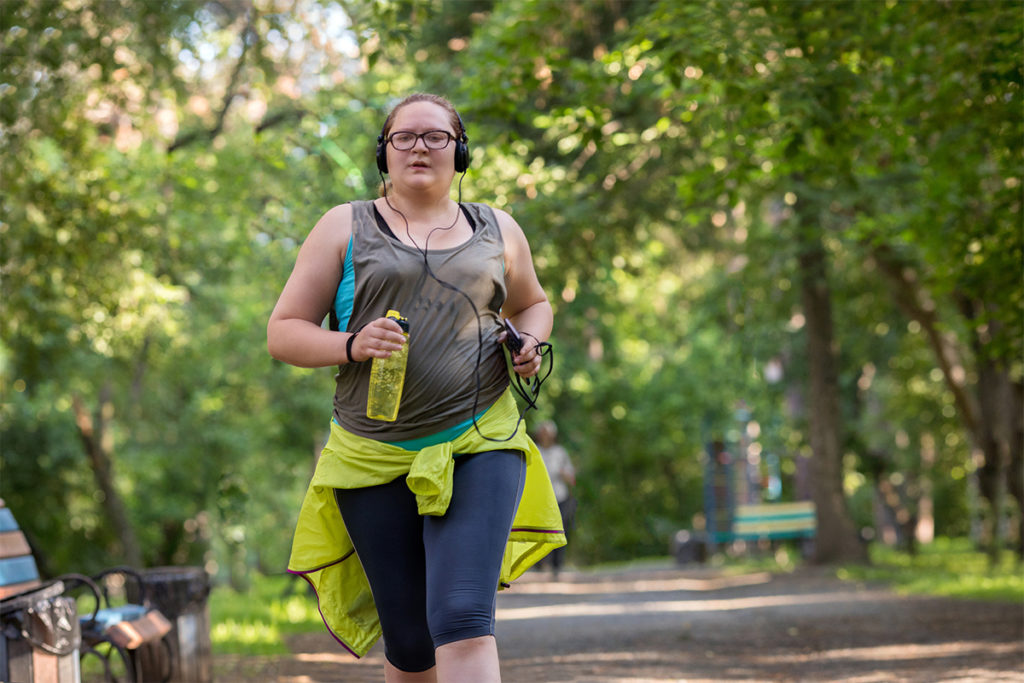Personal Training on Demand
Two businesses offer an innovative, all-you-want personal training model.

As a personal trainer the only option you have to provide personalized service is to give one-on-one sessions, right? Many clients can’t afford that. You may decide to do small-group training, but what about clients who’d like to pay even less and still get personal service, or those who want the attention but don’t like being pinned down to a time slot?
To meet needs such as these, David Patterson, MS, CSCS, of Personal Training Systems in Tacoma, Washington, created a new model for a personal training business: Clients get the attention of a personal trainer whenever they come in to his gym.
Both Patterson and Natalie Gibbins, who runs a similar business in San Diego, find that this business setup benefits them and their clients. Here’s what they are doing.
Why This Model?
After ending a career as an air traffic controller, Patterson found he had a natural knack for personal training and worked at several fitness facilities. He opened his business in December 1994 to offer affordable personal training from a competent trainer. “In my experience people either exercised at a club and had no one to help them or booked training sessions that cost $75 an hour,” he says. “I thought, ‘Why not have a lot of people getting trained at the same time? They can pay a little bit more than for a gym membership and get far more.’ The multitasking skills I had developed as an air traffic controller could be easily transferred to working with clients.”
Gibbins, who has been a trainer for 6 years, was intrigued by Patterson’s model. “My clients and I were unhappy with the location where I was working,” she explains. “At times the club experienced high traffic that was very distracting. I wanted to provide something more personal.” She talked to Patterson and liked his setup; in August 2003 she opened The Private Gym in San Diego.
How the Concept Works
When clients want to exercise, they show up at Patterson’s facility and a trainer helps them and the other clients on the floor. “I might tell Jane to do a warm-up and then I’ll be back to work with her on her bench press,” says Patterson. “Then I can work with the other clients while she’s warming up.”
Why does this business model work? “If I trained one person at a time, I would be able to train only eight people per day, Patterson points out. “I’d have to charge $75 to $100 an hour. If I train eight
people an hour, I can charge much less. Clients pay $300 a month for the first 3 months and $100 a month after that. If you compare this cost to that of several $75 personal training sessions, clients are getting far greater value for their $900.”
An individualized program is designed for each client by Patterson or his wife, Jana, who runs the business with him. A client’s information is kept in a personal notebook to which the trainer refers.
Although Gibbins has a smaller facility than Patterson (1,600 square feet versus 5,000), the concept works the same. Members pay $299 for their first month of membership and $249 every month thereafter. In the first month each member gets 3 one-on-one, scheduled sessions in addition to unscheduled, unlimited (but 100 percent trainer-supervised) use of the gym. If a member wants to train one-on-one after the first three “comp” sessions, he pays an additional $50 per hour. Nonmembers pay $65 an hour for one-on-one time. “Right now the straight one-on-one training brings in more money than the memberships, but I know we’ll get more members,” says Gibbins.
Using Other Trainers
While Patterson and his wife do virtually all of their training, Gibbins uses the services of three independent contractors.
“They each work about 20 hours a week, and they bill me per hour,” says Gibbins. “Whether they are training one person or several, they get paid the same rate. A trainer who sells a membership or personal training sessions gets a 20 percent cut of the membership or the first training session. I renegotiate pay every 8 weeks. When trainers have more experience and education, it’s less work and time for me so I pay them more.”
How does Gibbins choose trainers? “All my trainers have experience and are certified, but my choice is not always based on who has the most experience,” she says. “I look for passion. You can give someone experience, but you can’t make them be really excited about training.”
Capping Membership Numbers
Because the goal is to provide personal attention, Patterson and Gibbins won’t take more than a certain number of members.
“We typically have about 75 to 78 clients a month,” says Patterson. “We do have some attrition, but it is lower than the industry standard. Our low has been 65 members and our high has been 85.”
Gibbins plans on capping membership at 80 to 100 people. “With that many clients during peak hours, we’ll probably have six people in here at a time. If three trainers are here, two might be doing a one-on-one session and the other may be working with four other people. We don’t want more than that.”
Currently only Gibbins and one other trainer are working most of the time. However, for certain times, like 8:00 to 10:00 am, she schedules another trainer. “Two clients might be doing a one-on-one session, and I need a third trainer in case other members come in,” she says.
Why Clients Like the Concept
Maria Sessler has been coming to Patterson’s business since it opened. “It’s like the Cheers of gyms,” she remarks. “Everyone knows your name and says hello. The trainers are in tune with where I’m at and where I’m going. Everyone is friendly, the atmosphere is calming and it’s private.”
Tom Morley goes to Gibbins’s studio two or three times a week. “Because of the trainers’ expertise, I get accurate workouts in a compressed amount of time. I don’t have to exercise as often to get results, and I can use the extra time to work and earn more money. I also appreciate the personalized environment.”
Benefits to This
Business Model
Both Patterson and Gibbins have found this type of business to have several benefits.
Earning Potential. “Trainers can make excellent money if they market this concept correctly,” says Patterson. He should know. His business has been very successful. In 1995 he grossed about $50,000 with a 1,000-square-foot business. When he expanded to 2,500 square feet, his income jumped to $98,000 gross. In his 4th year, he expanded his business to 5,000 square feet and hit $150,000 gross. Last year the business earned about $400,000 gross.
Empowerment. “When I trained at another facility, clients might have liked me but not the club,” says Gibbins. “Now the facility is mine and I can design it and run it the way I want. I feel this helps me in my goal to empower my clients to unleash their individual potential.”
Balancing Work and Home Life. Although Gibbins works 60 hours a week, she is actually doing better at balancing her life than when she worked at a gym. “I used to write client programs at home, but now I do all my work at work,” she says. “I close between 12:00 noon and 3:00 pm during the week and have time for me. I’m not open on Sundays. When I leave the gym Saturday at noon, I shut it out of my mind.”
Challenges of This
Business Model
While this type of facility can be rewarding, it does come with potential stumbling blocks.
Selling the Value of Memberships. “It’s hard to get potential members to understand what we do rather than just looking at the price per month,” Gibbins says. “I have to get people to see that if they come in four times a week, they are paying less than $20 per session for personal attention. People who have had personal training in the past can more easily see the value.”
Having Faith in a New Business. Another challenge is start-up. Gibbins had to take out several loans to raise the $73,000 start-up cost for things like insurance, rent and high-end equipment. “It’s a big risk,” she says. “You must have faith that you’ll be okay until you earn more. You have to work hard and believe in your vision.”
Keeping Membership Constant. Once the business has been established and brought in a good number of members, the challenge is to get new members if old ones leave. “When several people happen to drop their memberships, we still have a fixed rent to pay,” says Patterson.
Providing Less Accountability for Clients. One reason clients like personal training is that they’re held accountable by a trainer. “Because our members can come when they want, the danger is that they may delay training,” says Patterson.
Tips for Starting a
Similar Business
How can other trainers open a similar facility? Here are some suggestions from Patterson and Gibbins.
Start Small. “Sustained monthly income is not guaranteed in your own business,” Patterson says. “If you rent a big place, pay $5,000 a month rent and have only seven members, you’re going to have a negative cash flow. Start small and stay within a budget. I recommend a facility of 1,000 square feet or less.”
Use Current Clientele. If you’re a new trainer, starting up a business like this might be difficult. Gibbins says she was able to do it because she had an existing clientele that followed her when she opened her facility.
Get Business Knowledge. “Before we opened the facility, we didn’t know anything about creating a business plan or renting space,” says Jana Patterson. “You need business knowledge to open and market a business.”
Gibbins feels she is an empowered business owner because she created an extensive business plan 6 months before opening her facility.
Note: Both trainers are happy to be contacted. Reach David Patterson at drbuff@qwest.net and Natalie Gibbins at natgibbins@hotmail.com.
Walk into The Private Gym and you’re in a brightly colored, very clean fitness sanctuary. High-energy, but not overly frenetic, music is playing. Three clients are exercising. Two have dropped in and are being helped by Natalie Gibbins, owner of the San Diego facility, while the other is doing a prescheduled one-on-one session with another trainer. The clang of weight stacks and the thwack of boxing gloves as they hit the heavy bag make noise, but there is not an overwhelming roar of chatter or a frantic rush to make it to a machine before someone else.
The English-born Gibbins moves between the two clients, directing one of them to do sets of exercises he knows and helping the second adjust her technique. She inspires the clients with her down-to-earth attitude and charming voice. She’s very real. “I tell my clients that I’ve munched out on peanut M&M’s and felt too full, or otherwise overindulged occasionally,” she says. “They know I’m not perfect and they can relate to that. They like coming because they don’t have to think about how they are going to exercise. They work hard, but always have a good time because we make it fun.”





